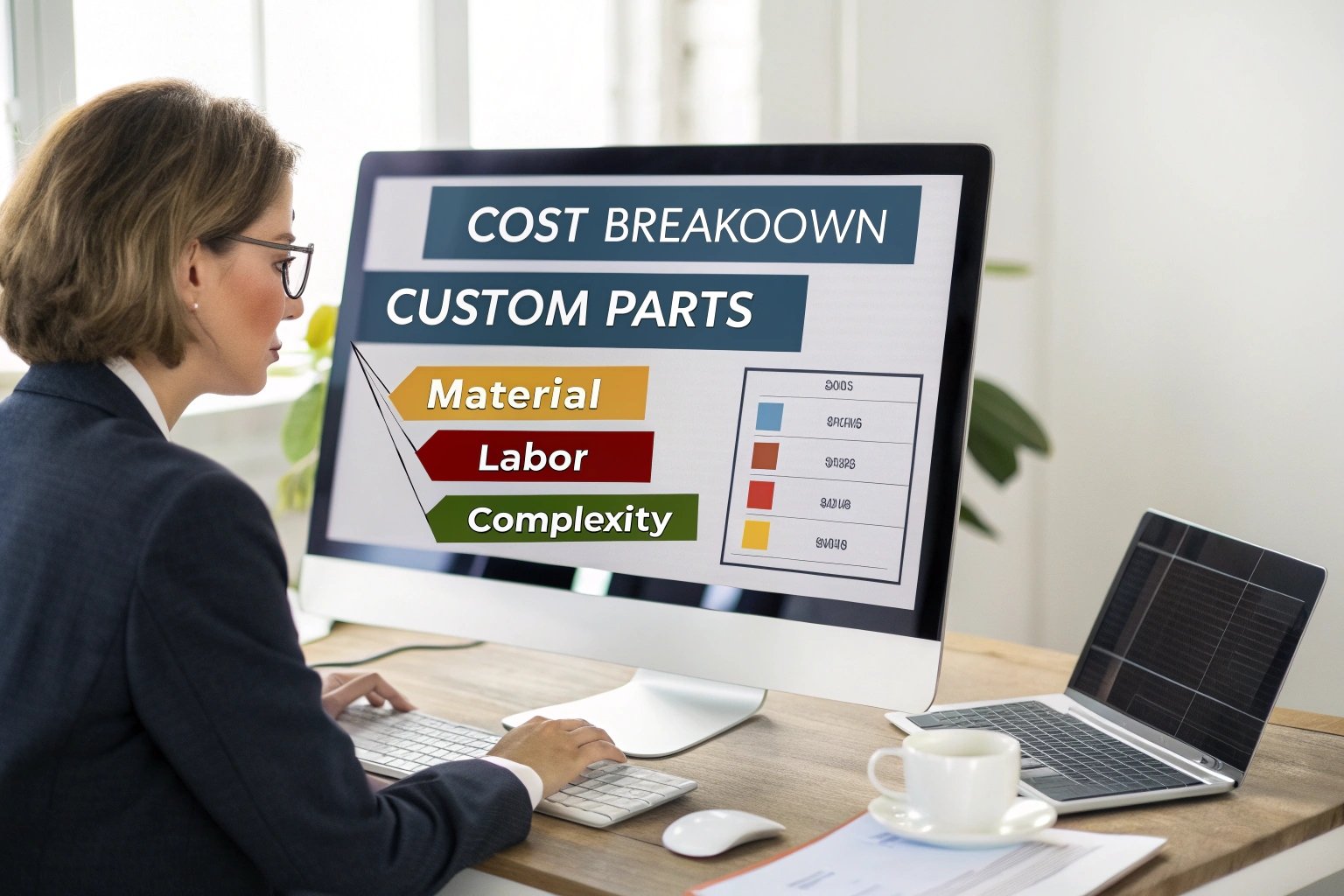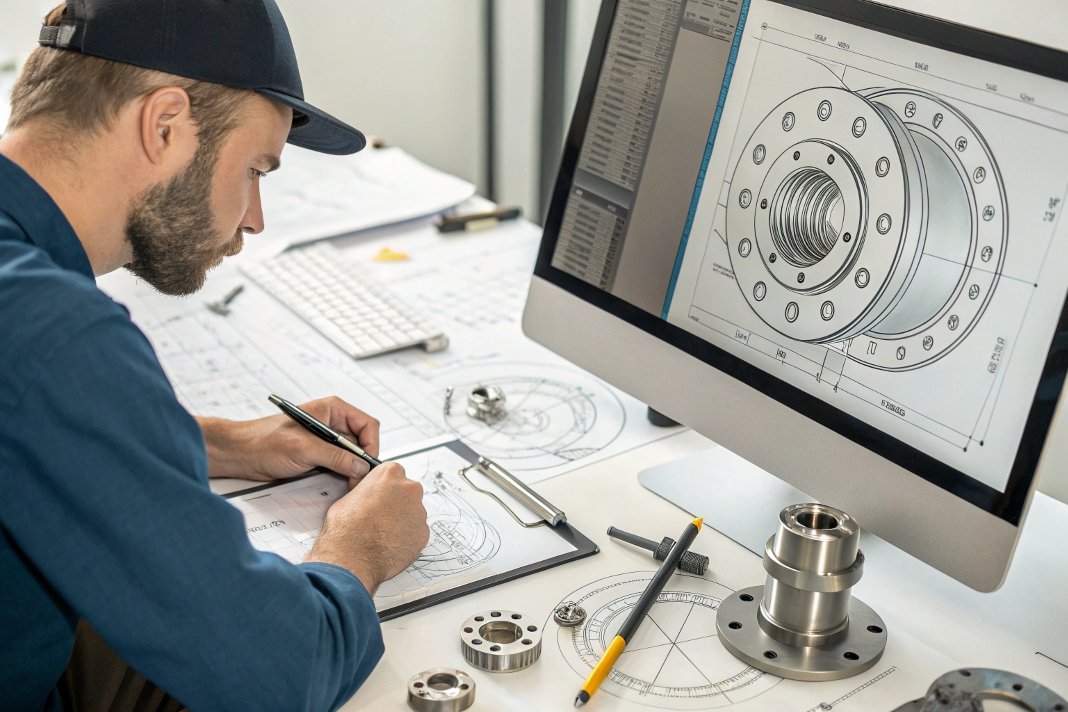
When I first started sourcing customized parts, I quickly realized that there’s a fine balance between quality and cost. On one hand, I wanted the highest quality parts to meet my specifications; on the other hand, I needed to ensure the cost didn’t exceed my budget. It wasn’t until I honed my approach to supplier selection1 and understood the cost factors2 that I found a way to achieve both. By focusing on key factors that influence cost and quality, I learned how to make more informed decisions.
Ensuring high-quality customized parts3 without overpaying requires a strategic approach that balances cost and quality. By focusing on the right factors, comparing multiple suppliers, and carefully managing your budget, you can secure the best value for your custom parts.
In this article, we will explore the key factors influencing the cost of custom parts, how to ensure quality without compromising cost, and why comparing multiple suppliers is essential for finding the best value.
What Are the Key Factors That Influence the Cost of Custom Parts?

The cost of custom parts is influenced by various factors that can affect both the production process and the final price. Understanding these factors helps you make smarter decisions and avoid unnecessary costs.
Key Cost Influencing Factors
| Factor | How It Affects Cost |
|---|---|
| Material Choice | High-quality materials typically cost more, but they ensure better performance and durability. |
| Complexity of Design | More intricate designs require advanced tools and additional time, raising production costs. |
| Quantity of Parts | Larger orders generally result in lower per-unit costs, as bulk manufacturing reduces setup times. |
| Manufacturing Method | Different methods (e.g., CNC machining, injection molding) have varying cost implications based on labor, equipment, and material usage. |
| Lead Time and Urgency | Rush orders tend to cost more due to the need for expedited production and shipping. |
Balancing Cost and Quality
When you choose materials and production methods, it’s essential to understand how each will impact both quality and cost. For example, opting for a lower-quality material might reduce upfront costs, but it could affect the overall performance and longevity of the parts. Similarly, more complex designs and faster production timelines can increase costs.
How Can You Ensure Quality Without Compromising on Cost?

Achieving high quality without exceeding your budget requires a balance between selecting the right suppliers, materials, and manufacturing processes. It’s all about prioritizing the most critical quality factors while being mindful of cost-saving opportunities.
Ensuring Quality While Managing Costs
| Strategy | How It Helps Maintain Quality and Control Costs |
|---|---|
| Focus on Core Quality Aspects | Identify the most critical quality features (e.g., strength, precision) that will impact performance. |
| Use Cost-Effective Materials | Opt for materials that offer good performance at a lower price point without compromising key specifications. |
| Leverage Technology | Employ advanced manufacturing technologies that reduce waste and improve precision, lowering costs. |
| Work with Experienced Suppliers | An experienced supplier will be able to produce high-quality parts more efficiently, saving both time and money. |
| Optimize Production Runs | Maximizing production efficiency and reducing setup time through batch orders can help lower costs per unit. |
Focus on Critical Quality Factors
To balance quality and cost, focus on the key aspects of the part’s functionality. For example, you might prioritize strength and durability in certain areas while accepting slightly lower precision or aesthetics in others. This targeted approach will allow you to maintain performance while keeping costs in check.
Why Is It Important to Compare Multiple Suppliers for the Best Value?

Comparing multiple suppliers is essential to ensure you are getting the best value for your money. By evaluating different quotes, capabilities, and production methods, you can identify the supplier that offers the right balance of price and quality.
Benefits of Comparing Multiple Suppliers
| Benefit | Why It’s Important |
|---|---|
| Competitive Pricing | Different suppliers offer varying prices based on their processes and materials. Comparing helps you find the best deal. |
| Quality Assurance | Suppliers may have different quality standards, so comparing ensures you choose one that aligns with your needs. |
| Production Capacity | Some suppliers may offer faster lead times or larger production capabilities, which can be crucial depending on your needs. |
| Customer Service and Support | Strong communication and after-sales support can be a deciding factor when selecting a supplier. |
| Flexibility and Customization | Some suppliers may be more willing to work with you on custom designs or specific requirements, ensuring you get exactly what you need. |
Getting the Best Value
By comparing multiple suppliers, you can assess not only the price but also the value they provide. For example, one supplier may offer lower prices but lack customer support or have longer lead times. Others might offer faster delivery and better communication but at a higher cost. Weighing these factors ensures that you’re not just choosing the cheapest option, but the one that provides the best overall value for your business.
Conclusion
Ensuring high-quality customized parts without overpaying involves understanding the factors that influence cost and quality. By focusing on the most important quality aspects, optimizing production processes, and comparing multiple suppliers, you can secure parts that meet your standards without exceeding your budget. The key is to strike a balance between cost-saving opportunities and the quality required to meet your performance needs.
This link will provide insights on selecting suppliers that balance quality and cost effectively for your custom parts needs. ↩
Understanding these cost factors can help you make informed decisions and avoid unnecessary expenses in custom parts manufacturing. ↩
Explore this resource to learn effective strategies for sourcing high-quality customized parts without overspending. ↩

